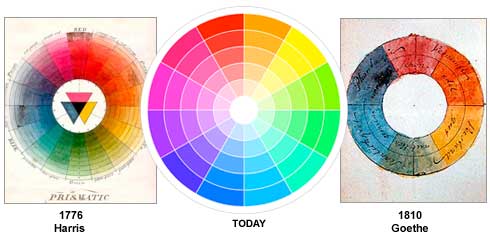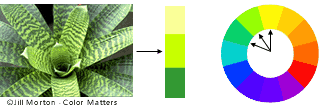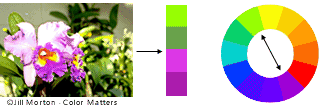Why is a shot list important
My shot list
Wednesday, 25 April 2018
Saturday, 21 April 2018
As Live - Critical Reflection
For our “As Live” unit we were given two roles each, a pre-production and production role. Mine
were Casting Director and Assistant Floor Manager. Within this critical analysis I will
discuss the processes and problems that i confronted whilst carrying out my roles as well as the research i conducted for both roles.
Casing
Director
Finding
your cast
Finding a cast for anything has come on leaps and bounds
since the days of putting advertisements in the paper for actors and extras
etc, however even with todays technology it’s not easy. For the show’s
Presenters and models I placed casting calls on both Sar Now, Mandy Actors
(formerly Casting Call Pro) and Social media. One thing to bare in mind when trying
to source a cast for anything, especially when it has a limited budget is
Equity. When an actor or model or any performer of any kind has equity this is
a sort of protection against exploitation, a sort of set of rules that any
employer must abide by to ensure fair treatment of the contributor. Most of the
time this means a minimum wage and travel expenses paid at least, sometimes
more than that, however we managed to source some people who were willing to
contribute for just travel expenses paid. It was a slow start with only two
applicants for the presenters but after a few days applications started being
received every day. One of the tasks as Casting Director I had was to create
character profiles for all applicants which included; their age, where they are
located, how they will be travelling to the studios, a large photograph of
themselves, sizes and heights for the models, and any contact details they
could provide. This process relied strongly on the ability to communicate
between the PA and the Directors as we frequently had meetings to update the
choices made on cast. After a meeting with Jemma the PA about the budget, we
agreed that it would be a good idea to re-assess the presenter and model
applicants based on location, therefore reducing the cost of having to pay for
their travel, as most of the applicants were based in London. Being polite and
professional was crucial when communicating with the contributors as not only
was I representing the show, but the Maidstone Studios as well. “A casting
Director must have the confidence of a Producer and a Director” (Crouch, 2003,
pg.266) and this was true in many situations. As Casting Director it was my job
to answer any and all questions the contributors had and to make sure they knew
where and when they were needed. So even if I didn’t know the answer to their
question, I had to have the confidence to deal with the situation in a manor
that was both professional but didn’t make it obvious I didn’t know the answer.
Part of The
Team
“The relationship that you have with the casting director is
as essential as the relationships you have with the Director of Photography or
Producer” (Catliff, 2013 pg. 56). As the person who was responsible for finding
every contributor on screen during the show (including VT’s) I was involved in
almost every meeting, from the VT team to the directors and producers meetings.
The reason I had to be so involved (as the quote supports the casting director
should be) is because not only did I have to just get presenters and models but
I had to actively search for the types of people/ personalities the Producers
were looking for. The Producers have a vision for the show and in their minds
already have people pictured, so it is my job to find people as closely matched
to what they have envisaged as possible. Add this with budget/ location
requirements and sizing requirements for the models clothes and keeping the
contributors on board, well it was a lot of emailing and frequent answering
questions.
Being
Prepared for anything
If you speak to anyone in the film or TV industry, especially
low budget productions or projects that rely on their contributors volunteering
etc. then they will tell you to be prepared for anything. Have a back up for
your back up because no doubt there will be a family emergency or something
will pop up last minute as it always does and I as a Casting Director need to
be ready and waiting with a solution to the problem. Two days before the day we
went live our older female model said there was a family problem and she could
no longer be a contributor for the show. I informed the production team that
night and we quickly worked to solve the problem. As frustrating as this news
was I had to maintain the level of professionalism that had been demonstrated
up until then, so I used this opportunity to do some research on how to respond
to circumstances such as these and found a website www.TheatreFolk.com that
helped a great deal. The article on this website (Hishon, 2017, TheatreFolk.com)
Gave me some good points to follow in the case of an actor dropping out such
as:
Figure out how to cover the role
If you had more than one applicant for the role, it’s worth
getting back in contact with the others who applied but didn’t get the role as
they may still be interested. If this isn’t the case or the other applicants
are busy, call in a friend. They may not be the best actor or contributor in
front of the camera but being so close to the day we went live this seemed like
our only option.
Do you need the Role?
One of the points on this website suggested that if it was
possible, in some cases it might be as well to cut the character from the
script or adapt the script to fit around that person not being present. This
may have been an option if it was a short film however due to the nature od the
show the older female model would not be able to be edited out of the script.
Stay Positive
The last thing this website told me was to stay positive, yes
it may be frustrating how last minute they left it but keeping calm and polite
is only going to help the situation. By replying with a positive attitude this
shows that you are both level headed and able to deal with situations like
this. Furthermore if you ever need contributors again and they fit the
description of what you are looking for, if you were polite and professional
with them they will more than likely agree to work with you again.
Speaking
from experience
Before
meeting the contributors we had for interviews e.g. Bonny and Sapphire Stone, I
emailed a contact I had in ITN to ask if she could pass me on to someone who
could tell me how they source people who have interesting stories for the news/
interviews. She passed me on to Ken Hayes, a Development Producer for ITN who
gave me lots of helpful tips and knowledge on how finding contributors is done
for the news. The first thing we spoke about was that whenever you are
searching for people it is within the brief of whoever commissions the
programme and you work to their parameters. In any part of TV if the people who
commissions your programme doesn’t like the content or contributors you bring
in then they are free to pull the plug at any time. This however was not a
problem for me as we in effect were commissioning our own programme with the
help of the studios. He also said that when looking for people make sure to get
a good balance of an interesting story but also someone who will be confident
on camera. He advised searching for bloggers or commentators, people who deal
with cameras/ audiences and can handle high pressure moments. This is why our
surprise guest Sapphire Stone was a good person to use for the programme
because not only do they make their own clothes (relevant to the show) but they
perform regularly in front of audiences. The last bits of advice he had were if
the interview goes dry and the presenters start getting one word answers then
get them to move onto another subject that may cause a debate or conflict of
opinion, and be honest and upfront with the contributors. Hayes said that if I
spend a couple of days with them, creating a bond of trust, they will more
likely be more open and truthful in the interview. If they feel safe and able
to trust the crew then they will relax, and a comfortable contributor is a
useful contributor.
Assistant
Floor Manager
What we do
Floor Managers are in charge of the studio floor and relay
instructions from the directors in the gallery to other crew and contributors
via the talkback system. They can also communicate to guests and talent on the
floor with a series of hand signals informing them of timing and which camera
to look at. As a Floor Manager it is also your responsibility to brief any
talent or guests on the floor (including audience) on health and safety
procedures such as making sure they know where all the fire exits are and where
the fire point is that everyone needs to go to in the event of a fire. “Anything that happens on the studio floor must go through
the Floor Managers” (Brown, 2016, pg. 50). This was the case with our live
production as when the VT’s started rolling it was down to the floor managers
and I to make sure everything was set for the cameras to come in from the VT.
This included handing a mic to one of our presenters for the show’s Fashion
Fails section, dressing and placing a mannequin on set in time for an interview
with the Etsy seller and the task that I had the responsibility of, organising
and cuing the models/ contributors. However if I had a question or wanted to do
something that involved changing things on the studio floor I would find one of
the two Floor Managers or communicate my question to the Gallery.
Research
and etiquette
Before we went live I needed to research my role as Assistant
Floor Manager, so I decided to not only research that but to research the
requirements for the role of Floor Manager as well just in case one of our Floor
Managers fell ill or couldn’t make it for some reason on the day. There is a
book called Cue and cut by roger
singleton-turner which is an informative book that talks about working in multi
camera studios, in this book I found some very useful information and tips such
as the ABCD’s. The ABCD’s are an initialism that stand for:
Artistes – make sure
they are in position, ready and they have any props that are needed. In my case
it was making sure the contributors were mic’d up and wearing the correct outfit
for the section they were about to appear in. This was done by myself multiple
times as I wanted to make sure that the Directors knew what outfit they wanted
the models to come down the catwalk at the end in. Our sound assistant was also
a great help as every time I escorted a contributor away from the stage he was
there waiting to de-mic them and put it on the right person.
Bright lights – checking
with the lighting crew and gallery that lighting is ok and whether it needs any
adjustments before recording. Also making sure the people in Vision are happy
with control over the lights and can fade when need to be faded etc.
Cameras – making
sure all the cameras are turned on, able to hear the talkback from the Gallery
and in position. It is also their responsibility to make sure the rest of the
crew are ready to record and to and any questions they have are to be
communicated to the Gallery via you. This would normally be up to the Floor
Manager however if they were preoccupied doing something else then this
responsibility may fall with the Assistant Floor Manager. On the day of the recording
there were a few problems with the talkback microphones on some of the Camera Operators
and I had to talk to the Gallery and inform them of why they weren’t getting a response
from certain crew members.
Doors – As Floor
Managers control everything that happens on the studio floor that also means
they are responsible for any unwanted sound that is picked from the floor. This
is why Floor Managers must check before they go live that all doors are close
thus not causing any sound or light disruption to the set. The doors at the
studios were heavy wooden double doors so I was allocated a greenroom runner,
and I asked him that whenever I took contributors through could he make sure
the doors don’t slam or make a noise behind me.
Thursday, 19 April 2018
Transitions: Wrong mans research
The Wrong Mans

Cast and crew
Director: Jim Field Smith - George Wing
DOP: David Rom - Jack Whiteley
Editor: David Webb - Connor Winfield
Sam: Mathew Baynton - Alex Hargood
Phillip: James Cordon - Andrew Phipps
Mr. Stevens: Nick Moran - Alex Donald
DOP style
Tuesday, 10 April 2018
Transitions Genre Research
Genre Research
The Wrong Mans is a Comedy Drama and therefore I will be looking at other comedy dramas to find things that they have in common as well as things we could incorporate into our project.
The best comedy-drama TV shows, also known as dramadies, provide not only laughs but also heartfelt storylines. They have been television staples for years, but that’s probably because people love the merging of those two genres. What makes the combination of comedy and drama so successful? In large part, it’s because one minute you could be laughing out loud and the next on the verge of tears. Thankfully, most comedy-drama TV shows prioritize laughs over sadness, so you’re never a puddle of tears for long. In the show Chuck for instance, the majority of the episodes maintain a level of brevity and only sometimes dip into emotional scenes.
Another great show that straddles the line between comedy and drama is Scrubs. In what may be the most emotional episode of the series, My Screw Up, we get a lighthearted episode until halfway through. From that point, the episode dips into complete and utter sob territory by revealing that one of the show’s most liked characters was actually dead the entire episode.
Content however is not the part of The Wrong Mans that we will be changing. What we will be focusing on is how the scenes are shot, the colour grading they receive, and the subtle messages within the visuals.
Two shows that I have chosen to take inspiration from for our project regarding colour grading and how they are filmed are Castle and Brooklyn nine-nine. For Castle, I will be talking about a hotel scene in which there is clearly lots of yellow light yet the Cinematographer seems to be able to capture that yellow light in the background whilst maintain clean light in the foreground.
Two shows that I have chosen to take inspiration from for our project regarding colour grading and how they are filmed are Castle and Brooklyn nine-nine. For Castle, I will be talking about a hotel scene in which there is clearly lots of yellow light yet the Cinematographer seems to be able to capture that yellow light in the background whilst maintain clean light in the foreground.
The reasoning behind the choice of Brooklyn Nine-Nine is how they shoot their exterior night scenes. It is a built-up city so there will almost always be street light of some kind, however they stage the light so well that it doesn't cast obvious shadows or stand out enough to break the audiences emersion in the scene.
Monday, 9 April 2018
Wednesday, 4 April 2018
Transitions Colour Theory
Colour Theory
Colour theory encompasses a multitude of definitions, concepts and design applications - enough to fill several encyclopedias. However, there are three basic categories of colour theory that are logical and useful: The colour wheel, colour harmony, and the context of how colours are used.
Colour theories create a logical structure for colour. For example, if we have an assortment of fruits and vegetables, we can organise them by colour and place them on a circle that shows the colours in relation to each other.

The Colour Wheel
A colour circle, based on red, yellow and blue, is traditional in the field of art. Sir Isaac Newton developed the first circular diagram of colours in 1666. Since then, scientists and artists have studied and designed numerous variations of this concept. Differences of opinion about the validity of one format over another continue to provoke debate. In reality, any colour circle or colour wheel which presents a logically arranged sequence of pure hues has merit.

There are also definitions (or categories) of colours based on the colour wheel. We begin with a 3-part colour wheel.

Primary Colors: Red, yellow and blue
In traditional colour theory (used in paint and pigments), primary colours are the 3 pigment colours that cannot be mixed or formed by any combination of other colours. All other colours are derived from these 3 hues.
Secondary Colours: Green, orange and purple
These are the colours formed by mixing the primary colours.
Tertiary Colors: Yellow-orange, red-orange, red-purple, blue-purple, blue-green & yellow-green
These are the colours formed by mixing a primary and a secondary colour. That's why the hue is a two-word name, such as blue-green, red-violet, and yellow-orange.
Colour Harmony
Harmony can be defined as a pleasing arrangement of parts, whether it be music, poetry, colour, or even an ice cream sundae.
In visual experiences, harmony is something that is pleasing to the eye. It engages the viewer and it creates an inner sense of order, a balance in the visual experience. When something is not harmonious, it's either boring or chaotic. At one extreme is a visual experience that is so bland that the viewer is not engaged. The human brain will reject under-stimulating information. At the other extreme is a visual experience that is so overdone, so chaotic that the viewer can't stand to look at it. The human brain rejects what it cannot organise, what it cannot understand. The visual task requires that we present a logical structure. Colour harmony delivers visual interest and a sense of order.
In summary, extreme unity leads to under-stimulation, extreme complexity leads to over-stimulation. Harmony is a dynamic equilibrium.
Some Formulas for Colour Harmony
There are many theories for harmony. The following illustrations and descriptions present some basic formulas.
1. A colour scheme based on analogous colours

Analogous colours are any three colours which are side by side on a 12-part colour wheel, such as yellow-green, yellow, and yellow-orange. Usually one of the three colours predominates.
2. A colour scheme based on complementary colours

Complementary colours are any two colours which are directly opposite each other, such as red and green and red-purple and yellow-green. In the illustration above, there are several variations of yellow-green in the leaves and several variations of red-purple in the orchid. These opposing colours create maximum contrast and maximum stability.
3. A colour scheme based on nature

Nature provides a perfect departure point for colour harmony. In the illustration above, red yellow and green create a harmonious design, regardless of whether this combination fits into a technical formula for colour harmony.
How colour behaves in relation to other colours and shapes is a complex area of colour theory. Compare the contrast effects of different colour backgrounds for the same red square.
Red appears more brilliant against a black background and somewhat duller against the white background. In contrast with orange, the red appears lifeless; in contrast with blue-green, it exhibits brilliance. Notice that the red square appears larger on black than on other background colours.
Different readings of the same colour

If your computer has sufficient colour stability and gamma correction you will see that the small purple rectangle on the left appears to have a red-purple tinge when compared to the small purple rectangle on the right. They are both the same colour as seen in the illustration below. This demonstrates how three colours can be perceived as four colours.
Observing the effects colours have on each other is the starting point for understanding the relativity of colour. The relationship between values, saturations and the warmth or coolness of respective hues can cause noticeable differences in our perception of colour.
Tuesday, 3 April 2018
Sunday, 1 April 2018
Subscribe to:
Comments (Atom)



















